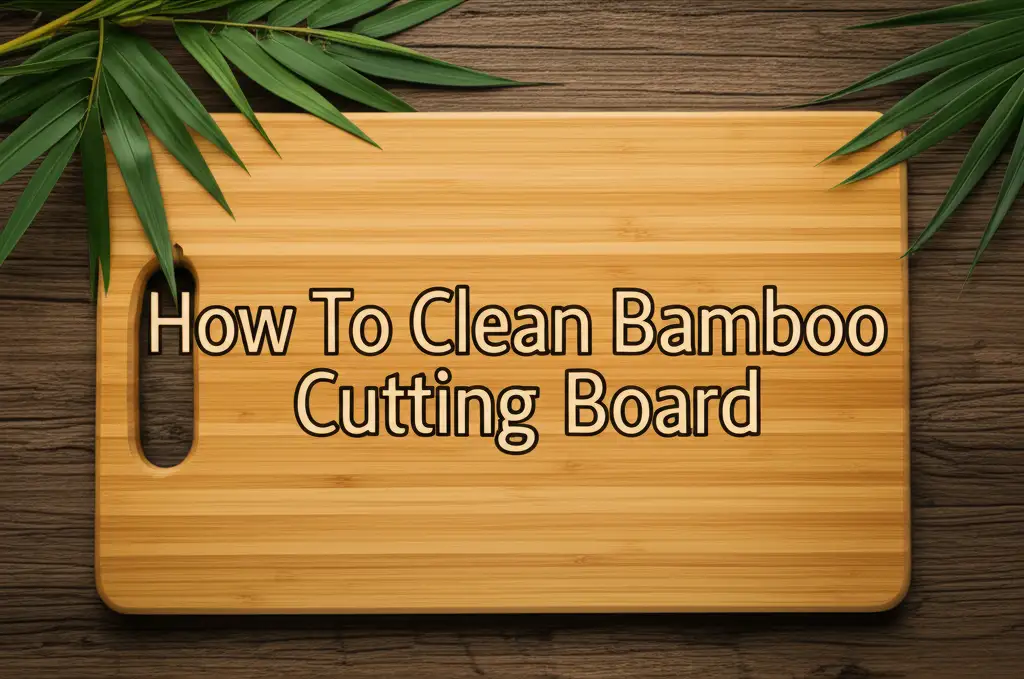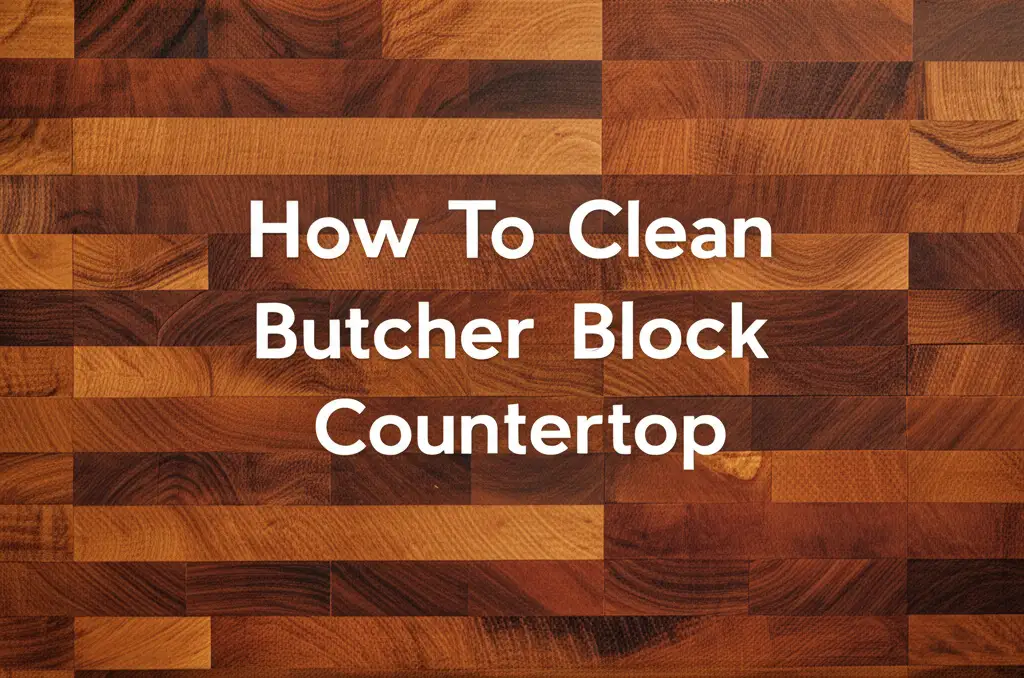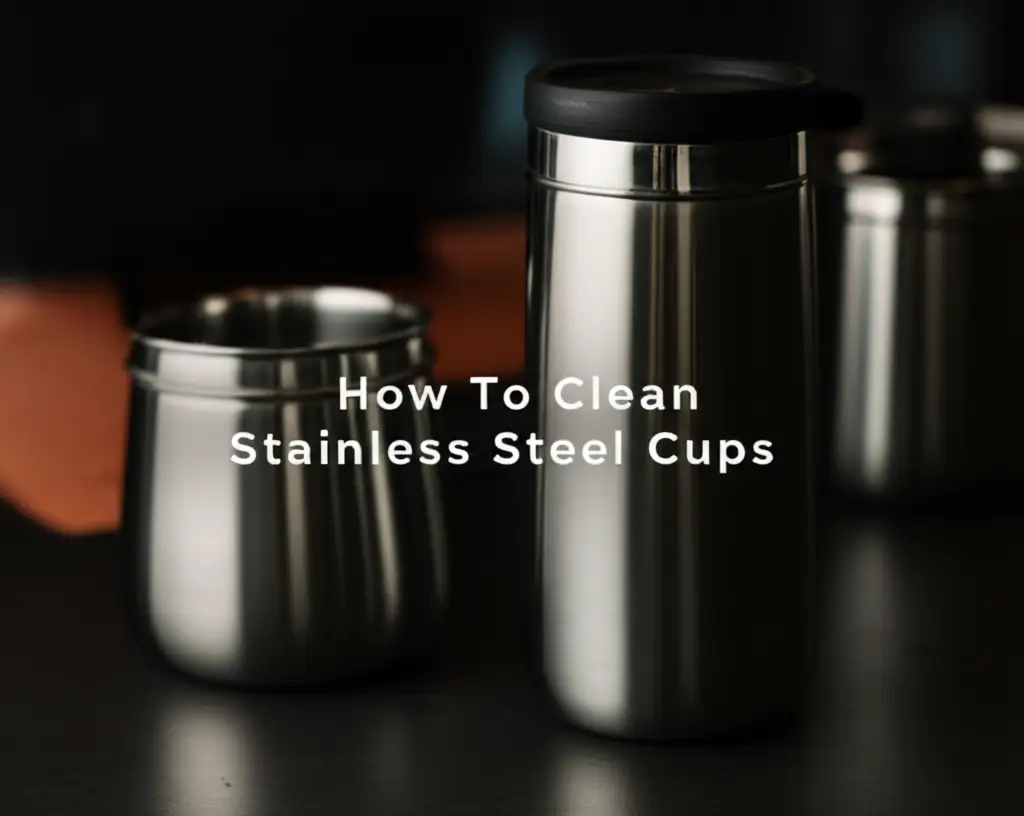· Kitchen Care · 14 min read
How To Clean Bamboo Cutting Board

How to Clean Your Bamboo Cutting Board for Lasting Freshness
Keeping your kitchen clean is a daily task, and your cutting board is a key player. If you own a bamboo cutting board, you know its natural beauty. You also know it needs proper care. Knowing how to clean bamboo cutting board surfaces helps them last. A clean board is essential for food safety and a tidy kitchen. This article will guide you through simple steps. We will cover daily cleaning, deep sanitization, and essential maintenance.
Takeaway
To keep your bamboo cutting board clean and safe:
- Wash immediately after use with warm, soapy water.
- Avoid soaking or putting it in the dishwasher.
- Sanitize deeply with vinegar or lemon and salt for stains.
- Oil regularly with food-grade mineral oil to prevent drying and cracking.
- Store upright in a dry place.
A Quick Guide to Cleaning Your Bamboo Board
You clean a bamboo cutting board by washing it promptly with warm, soapy water. Use a soft sponge. Rinse it thoroughly. Dry the board immediately with a clean towel. Allow it to air dry completely standing up.
Understanding Your Bamboo Cutting Board
Bamboo cutting boards are popular in kitchens everywhere. They are known for being strong and kind to knives. Bamboo is a grass, not a wood, but it shares many properties with traditional hardwoods. Its dense fibers help resist knife marks. These boards also have a unique look that many people love.
Why Bamboo Needs Special Care
Bamboo boards absorb liquids if not properly sealed or maintained. This can lead to stains and odors. They can also warp or crack if exposed to too much moisture. Unlike plastic, bamboo is a natural material. It requires different cleaning methods than non-porous surfaces. Proper care extends the board’s life and keeps it safe for food preparation.
Common Bamboo Board Challenges
Users often face common issues with bamboo boards. Stains from colorful foods, like beets or carrots, can appear. Persistent odors from onions or garlic also linger. Over time, a board might look dry or develop small cracks. Warping can happen if the board is left wet on one side. Understanding these problems helps you prevent them.
Daily Cleaning for Bamboo Cutting Boards
Daily cleaning is the most important step for bamboo. This routine prevents food particles from drying onto the surface. It also stops bacteria from growing. Simple habits after each use keep your board hygienic. Regular cleaning makes deep cleaning less frequent.
Basic Steps for Light Use
For light use, like chopping vegetables, a quick wash is enough. I usually grab my board right after I finish cutting. I clean it before anything dries on. This saves me time and effort later on.
Follow these steps for daily cleaning:
- Scrape off food bits: Use a spatula or knife edge to remove any remaining food.
- Wash with warm, soapy water: Apply a small amount of dish soap to a damp sponge or cloth. Gently scrub both sides of the board. I make sure to cover all areas.
- Rinse thoroughly: Rinse the board under warm running water. Ensure all soap residue is gone.
- Dry immediately: Use a clean towel to dry the board completely. Do not let it air dry flat.
- Air dry upright: Stand the board on its edge or in a drying rack. This allows air to circulate around all surfaces.
Dealing with Everyday Food Residue
Sometimes food residue sticks to the board. This often happens with starchy foods or sticky ingredients. A simple scrub with a brush can help. I keep a dedicated brush for my cutting board cleaning. This ensures a clean surface every time.
For tougher spots, you can use a bit more elbow grease. Sprinkle baking soda on the wet spot. Then scrub with your sponge. Baking soda helps lift stuck-on food. It also neutralizes odors. Always rinse well after using baking soda.
Deep Cleaning and Sanitizing Bamboo Boards
Daily cleaning keeps your board looking good. Deep cleaning and sanitizing are crucial for hygiene. This is especially important after cutting raw meat. Harmful bacteria can hide in knife grooves. Regular deep cleaning ensures a safe cooking environment.
Tackling Stubborn Stains and Odors
Stubborn stains and odors are common problems. I have used various methods to remove them. Lemon and salt are my go-to for natural stain removal. Baking soda is excellent for absorbing smells. Combining these can tackle most issues.
Steps for stains and odors:
- Lemon and salt scrub: Sprinkle coarse salt over the stained area. Cut a lemon in half. Use the lemon half as a scrubber. Squeeze the lemon as you scrub. The acid helps lift stains. The salt acts as a gentle abrasive. Let it sit for 10-15 minutes for tough stains.
- Baking soda paste: Mix baking soda with a little water to form a paste. Apply it to the smelly or stained area. Let it sit for 20-30 minutes. Baking soda absorbs odors.
- Rinse and dry: Rinse the board thoroughly with warm water. Ensure no salt or baking soda remains. Dry immediately with a towel. Then air dry upright.
Disinfecting After Raw Meat
Cutting raw meat requires special care to prevent cross-contamination. Bacteria like Salmonella or E.coli can live on surfaces. It is vital to disinfect your bamboo board after cutting raw poultry, fish, or red meat. This step protects your family’s health. For more detailed information on sanitizing wooden boards after raw meat, refer to our guide on how to clean wood cutting board after raw meat.
Steps for disinfecting:
- Initial wash: First, wash the board with hot, soapy water. Scrub thoroughly to remove all visible meat particles.
- Vinegar solution: Mix equal parts white vinegar and water in a spray bottle. Spray the entire board liberally.
- Let it sit: Allow the vinegar solution to sit on the board for 5-10 minutes. Vinegar is a natural disinfectant.
- Rinse and dry: Rinse the board thoroughly under warm water. Dry it immediately with a clean towel. Then stand it upright to air dry completely.
Natural Sanitizers: Vinegar and Lemon
Vinegar and lemon juice are effective natural sanitizers. They are safe for food contact surfaces. Vinegar is acetic acid, which kills many bacteria. Lemon juice contains citric acid and is also antibacterial. I often use them in rotation for general sanitizing.
Using vinegar: Spray undiluted white vinegar on the board after washing. Let it sit for a few minutes. Then rinse and dry. This helps neutralize odors and kill germs.
Using lemon: Rub a cut lemon over the board’s surface. Let the juice sit for 5-10 minutes. This is great for brightening the board and removing mild odors. Rinse well afterward.
Restoring and Maintaining Your Bamboo Board’s Luster
Beyond cleaning, bamboo boards need regular maintenance. This helps prevent them from drying out, cracking, or warping. Proper care also enhances their natural beauty. Oiling is a key part of this maintenance. It creates a protective barrier.
Oiling for Protection and Longevity
Oiling your bamboo board prevents it from drying out. It also helps repel water and food stains. A well-oiled board looks rich and healthy. I typically oil my board once a month, or more often if it feels dry. Use a food-grade mineral oil, beeswax conditioner, or a blend specifically for cutting boards. Avoid vegetable oils like olive oil, as they can go rancid.
Steps for oiling:
- Ensure board is clean and dry: The board must be perfectly dry before oiling. Any moisture trapped beneath the oil can lead to mold.
- Apply oil generously: Pour a generous amount of food-grade mineral oil onto the board. I usually use a clean cloth or paper towel to spread it.
- Rub into the grain: Rub the oil into the bamboo, following the grain. Ensure both sides and all edges are covered. Don’t forget the sides!
- Let it soak: Let the oil penetrate the wood for at least 4-6 hours, or overnight. The board should absorb the oil.
- Wipe off excess: After soaking, wipe off any excess oil with a clean, dry cloth. The board should feel smooth, not greasy.
- Repeat: For new boards or very dry boards, repeat the process. Apply oil daily for a week. Then reduce to once a month.
Removing Watermarks and Dry Spots
Watermarks often appear as white rings or spots. They happen when water sits on the board for too long. Dry spots look dull and lighter than the rest of the board. Both indicate a lack of proper oiling or immediate drying.
To remove watermarks:
- Rub with mineral oil: Apply a small amount of mineral oil to the watermark. Rub it in with a soft cloth. The oil helps displace the moisture.
- Gentle abrasion: For stubborn marks, make a paste of salt and mineral oil. Gently rub it into the mark. Wipe clean.
- Re-oil the board: After treating the mark, ensure the entire board is re-oiled for protection.
To fix dry spots:
- Targeted oiling: Apply extra mineral oil directly to the dry spots.
- Allow absorption: Let it soak in for several hours.
- Wipe excess: Wipe off any unabsorbed oil.
- Regular oiling: Increase the frequency of your general board oiling.
Preventing Damage to Your Bamboo Cutting Board
Prevention is easier than repair. Good habits keep your bamboo board in top condition. Avoiding certain actions will significantly extend its life. This includes how you wash and store it.
Avoiding Dishwashers and Soaking
This is a critical rule for bamboo boards. Dishwashers use high heat and harsh detergents. This combination strips the natural oils from bamboo. It also causes the wood to warp, crack, and split. Soaking a bamboo board in water has the same effect. Water penetrates the fibers, causing them to swell. When the board dries, it shrinks unevenly. This leads to warping and cracking. Always hand wash your bamboo board. Never submerge it in water.
Proper Storage Techniques
How you store your bamboo board matters. Incorrect storage can lead to warping or mold growth. Boards need airflow on all sides to dry completely. Storing them flat on a counter traps moisture. This creates a breeding ground for mold.
Ideal storage practices:
- Store upright: Keep your board standing on its edge. Use a drying rack or a special slot in your cabinet. This allows air to circulate around the entire surface.
- Dry environment: Store boards in a dry place. Avoid placing them near sinks or areas with high humidity.
- Avoid heat sources: Do not store boards near direct heat sources. This includes ovens or heating vents. Extreme heat can cause the bamboo to dry out and crack.
Addressing Specific Issues: Mold, Warping, and Cracks
Even with the best care, sometimes issues arise. Mold, warping, and cracks are common problems. Knowing how to address them can save your board. Act quickly to prevent further damage.
How to Deal with Mold
Mold can appear on bamboo boards, especially in humid environments. It looks like black, green, or white fuzzy spots. Mold is a health hazard. It needs immediate attention.
Steps to remove mold:
- Isolate the board: Move the board away from other kitchen items.
- Scrub with strong cleaner: Mix white vinegar with a small amount of dish soap. Scrub the moldy area vigorously with a stiff brush.
- Hydrogen peroxide (if needed): For stubborn mold, spray 3% hydrogen peroxide on the spot. Let it sit for 10-15 minutes.
- Rinse and sanitize: Rinse the board thoroughly. Sanitize it with a vinegar solution as described earlier.
- Dry completely: Ensure the board is completely dry. Stand it upright in a well-ventilated area. If mold persists or covers a large area, it may be best to discard the board for safety.
Correcting Minor Warping
Minor warping can sometimes be corrected. This usually happens when one side dries faster than the other. You can try to reverse the warp.
Steps for minor warping:
- Dampen the convex side: Identify the “high” side of the warp (the convex side). Dampen a towel with warm water. Wring it out well. Place the damp towel on the convex side.
- Apply pressure: Place heavy books or weights on top of the board. Ensure pressure is evenly distributed.
- Allow to flatten: Leave the weights on for several hours or overnight.
- Dry completely: Remove weights and towel. Air dry the board upright.
- Oil: Once dry, generously oil the entire board to rehydrate.
Severe warping may not be fixable. Prevention is key.
Repairing Small Cracks
Small cracks in bamboo boards are usually due to dryness. They often appear along the grain. You can sometimes repair these to prevent them from growing.
Steps for small cracks:
- Clean and dry: Ensure the board is clean and completely dry.
- Apply wood glue: Use food-safe wood glue. Apply a small amount into the crack.
- Clamp: Clamp the board tightly, or wrap it with heavy-duty tape. This presses the crack together.
- Cure time: Let the glue cure completely according to package directions (usually 24 hours).
- Sand: Once dry, sand any excess glue.
- Oil heavily: Generously oil the board, focusing on the repaired area. This rehydrates the bamboo.
For larger cracks, replacing the board may be safer.
Comparing Bamboo Cleaning to Other Boards
Understanding different cutting board materials helps with proper care. While bamboo shares some similarities with traditional wood, it also has unique characteristics. Plastic boards, on the other hand, require a completely different approach.
Bamboo vs. Traditional Wood
Bamboo is technically a grass, but its properties are similar to hardwood. Both absorb liquids. Both can warp or crack if not cared for. Cleaning methods for bamboo often apply to wooden boards. For example, both should never go in a dishwasher. Both benefit from regular oiling. However, bamboo is generally harder and less porous than many softwoods. This means it may be more resistant to deep stains. Traditional wooden chopping boards may require more frequent oiling due to their open grain.
Bamboo vs. Plastic Boards
Plastic cutting boards are non-porous. This means they do not absorb liquids or odors. They can often go into a dishwasher, making cleanup simpler. However, plastic boards can harbor bacteria in deep knife cuts. They can also degrade over time. Cleaning a plastic cutting board often involves bleaching or high-temperature washing. Bamboo requires gentler, more natural cleaning agents and careful drying. The key difference lies in the material’s porosity and reaction to water and heat.
FAQ Section
How often should I oil my bamboo cutting board?
Oil your bamboo cutting board at least once a month. If you use it very often or live in a dry climate, oil it more frequently. You will know it needs oil when it looks dry or dull. Regular oiling prevents cracking and keeps the board looking healthy.
Can I use bleach on my bamboo cutting board?
No, avoid using bleach on your bamboo cutting board. Bleach can dry out the bamboo fibers. It can also cause the board to become brittle. It might also leave a chemical residue. Stick to natural cleaners like vinegar, lemon, and salt for sanitizing and stain removal.
What kind of oil is best for bamboo cutting boards?
Use food-grade mineral oil. You can also use beeswax conditioner or a specialized cutting board oil. These oils are safe for food contact. They will not go rancid like vegetable oils. Apply a generous amount for best protection.
My bamboo board warped. Can I fix it?
For minor warping, you might be able to fix it. Dampen the convex side of the board with a wet towel. Place weights on it overnight to flatten it. For severe warping, the board may not be salvageable. Prevention is always the best approach.
How do I remove black spots from my bamboo board?
Black spots usually indicate mold. Scrub the area with a solution of white vinegar and a little dish soap. For stubborn mold, you can try 3% hydrogen peroxide. Always rinse thoroughly afterward. Ensure the board dries completely to prevent recurrence.
Is bamboo more hygienic than wood for cutting boards?
Bamboo is often considered slightly more resistant to bacteria than some hardwoods. This is due to its density and natural antimicrobial properties. However, both require thorough cleaning and proper maintenance. Proper hygiene depends more on your cleaning habits than the material itself.
Conclusion
Caring for your bamboo cutting board is a straightforward process. You just need a few simple steps. Daily cleaning after each use is vital. This prevents food residue and bacteria buildup. Regular deep cleaning and sanitization protect your family from germs. Remember the importance of oiling your board. This keeps it hydrated and beautiful. By following these guidelines, you extend your board’s life. You also ensure a safe and clean surface for all your food preparation. A well-maintained bamboo cutting board is a true asset in any kitchen. Make cleaning your bamboo cutting board a regular habit. Your efforts will result in a long-lasting, hygienic kitchen tool.
- bamboo cutting board
- cutting board cleaning
- wood board care
- kitchen hygiene
- board maintenance




